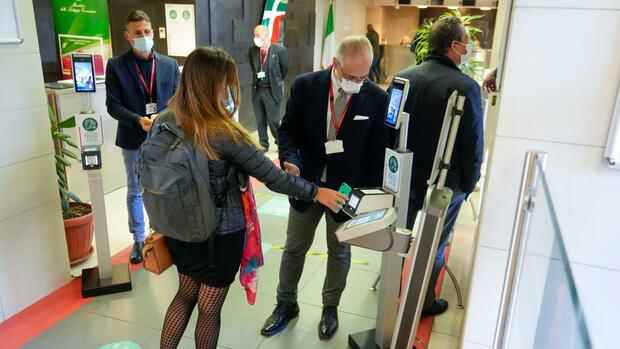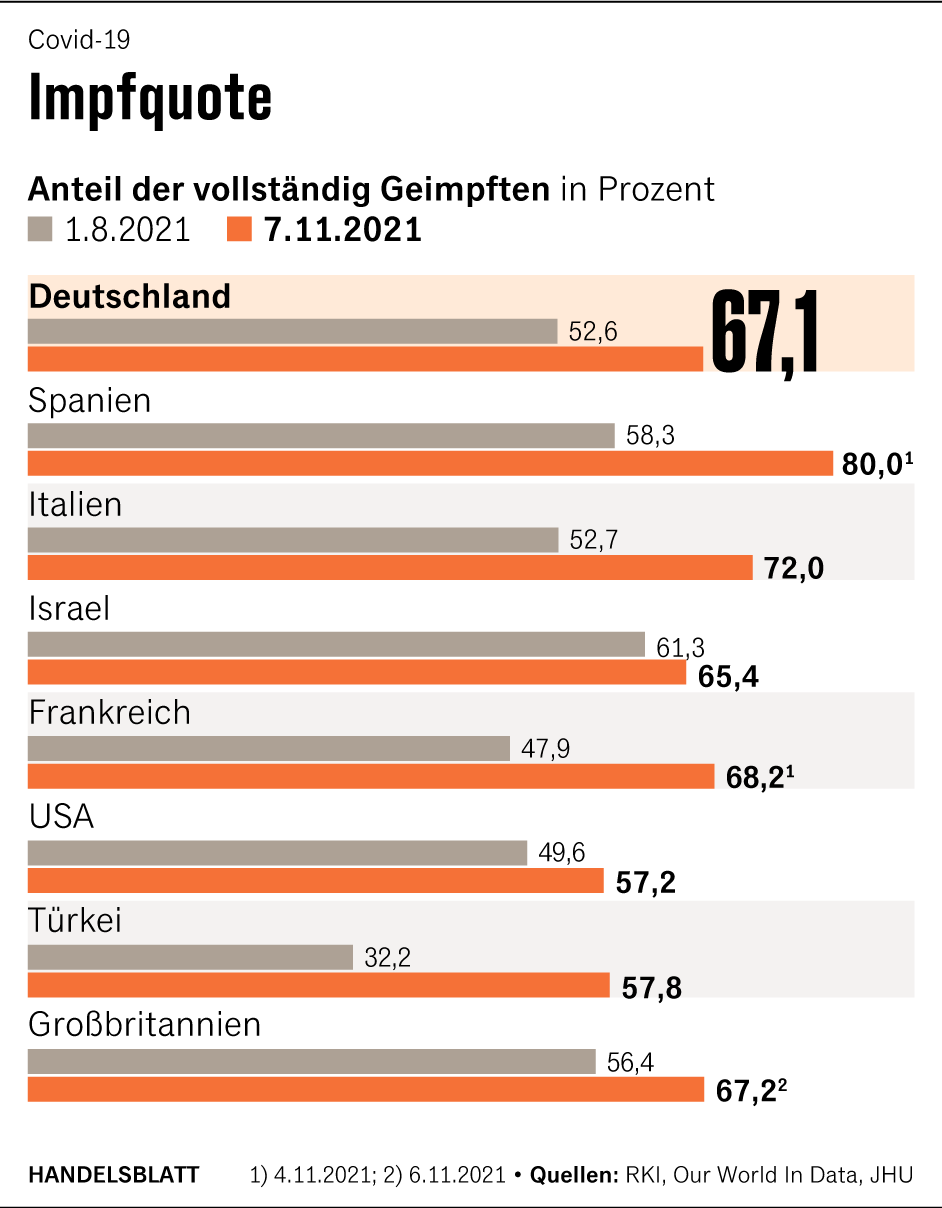Nobody comes to the company premises without a fever test and 3G verification.
(Photo: AP)
Rome The turnstiles in front of Villa Patrizi are locked. All employees of the state railway operator who want to enter the building flanked by palm trees in the north of Rome have to go through the visitor entrance next door. Mask is compulsory here, disinfectant dispensers hang on the walls.
If you want to go to the office, you have to pass the two security guards who are set up next to the gray control pillars: a fever is measured at the top, the QR code is scanned at the bottom. Only when the green tick appears on the display can you continue to the site.
A strict 3G regulation has been in effect in Italy’s working world since October 15: Only those who have been vaccinated, recovered or have just been tested are allowed to come to work. Anyone who does not have a “Green Pass” with them, whether on their smartphone or printed out, stays outside – and is suspended from work without a salary. The regulation applies throughout the country, for large corporations as well as for small businesses.
While Germany is still discussing whether it makes sense, the system has been working in Italy for four weeks. And that very smoothly.
Top jobs of the day
Find the best jobs now and
be notified by email.
Mario Draghi’s government wanted to use the measure to increase the vaccination rate. We succeeded: As of Thursday, almost 84 percent of the population over the age of twelve had been completely vaccinated. More than 86 percent have at least one dose.
Since the September decision, the number of doses administered each week has remained stable above a million. The number of Covid tests, on the other hand, has risen sharply and has been between 400,000 and 500,000 a day almost consistently since mid-October. From June to August, the tests had leveled off at around 200,000 a day.
“I think the 3G regulation is good because nobody is excluded,” says Joachim Bernauer, director of the Goethe Institute in Rome. He wants to avoid a split in the workforce at all costs. “Unvaccinated people must also be welcome.”
He estimates that a fraction of his 150 employees across Italy have not yet been vaccinated. However, he is not allowed to query the status. “That is why each of us is checked in the morning when we receive it via the app.” The check does not tell whether the certificate was acquired through a test, vaccination or convalescence. “We are only shown a name, in case of doubt we can ask for ID.”
There are only three hotspots in Italy
The “VerificaC19” app is used by all employers, as are restaurants, museums and other public places where the Green Pass has been mandatory since September. Anyone can download the app for free to check babysitters or cleaning staff at home, for example. The majority of Italians have accepted the strict measures. So far, there have only been 900 rule violations in the companies – with more than 1.5 million checks by law enforcement officers.
The success of the regulation can be clearly seen in the number of infections. The fourth wave began in Italy, but much less drastically than in Germany. On Thursday, the number of new infections reported was just under 8,000; exactly one year ago there were more than 32,000 cases.
Unlike then, the situation in the hospitals is still relaxed: 423 intensive care beds are currently occupied, a year ago it was just under 3000. The seven-day incidence is rising slightly, most recently at just under 73. From numbers like in Bavaria or Thuringia is far away here.
There are currently only real hotspots in the provinces of Bolzano (285), Gorizia (272) and Trieste (503). They are all in the north of the country – and are areas in which the number of vaccine opponents and corona deniers is particularly high.
From the very beginning, the strongest protests against the Green Pass in the world of work were in Trieste. At the start four weeks ago, employees wanted to block the important local port and thus paralyze the entire logistics of the country – but they failed.
More: The incidence in Germany has reached a new high. Other countries are far better off. What can we learn from abroad?



